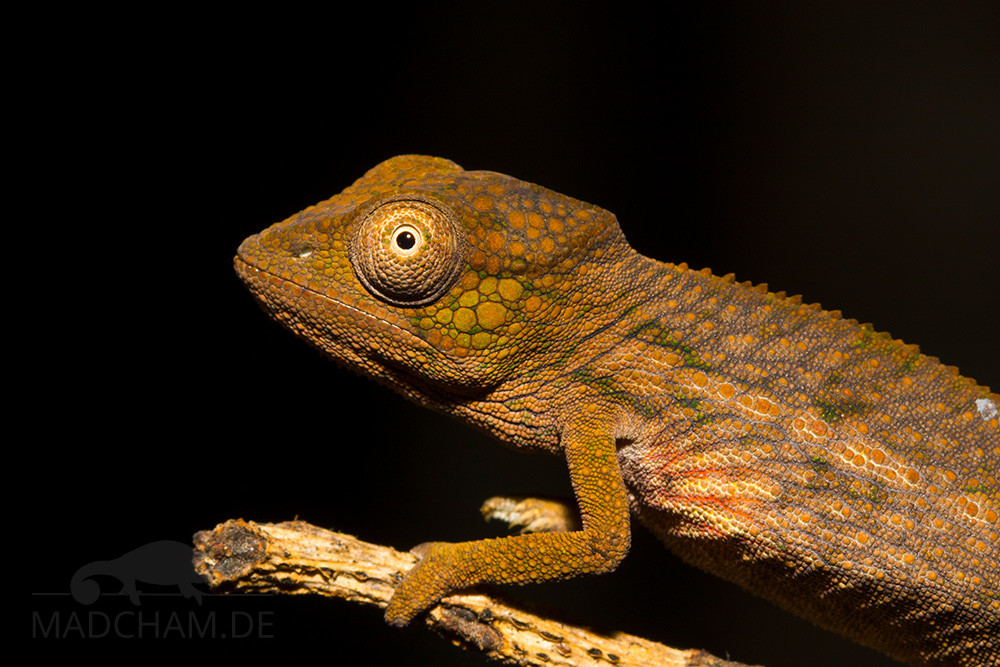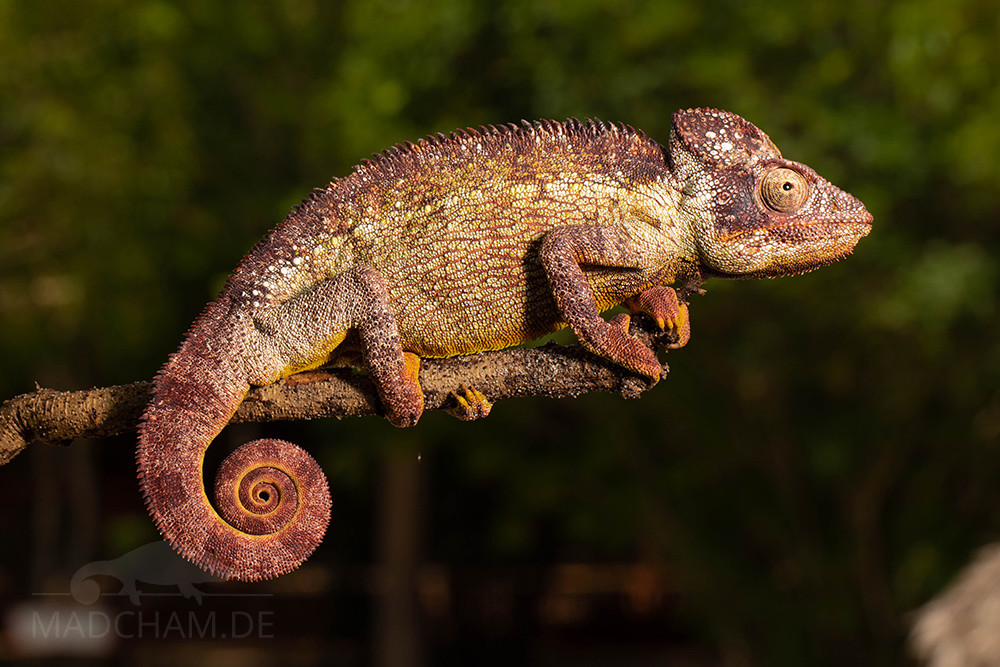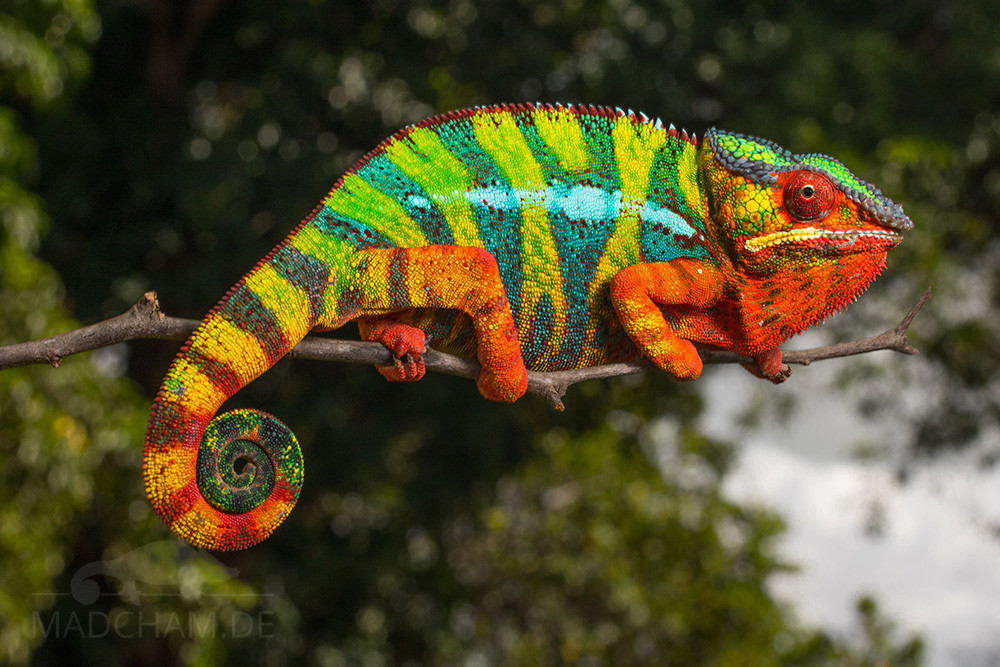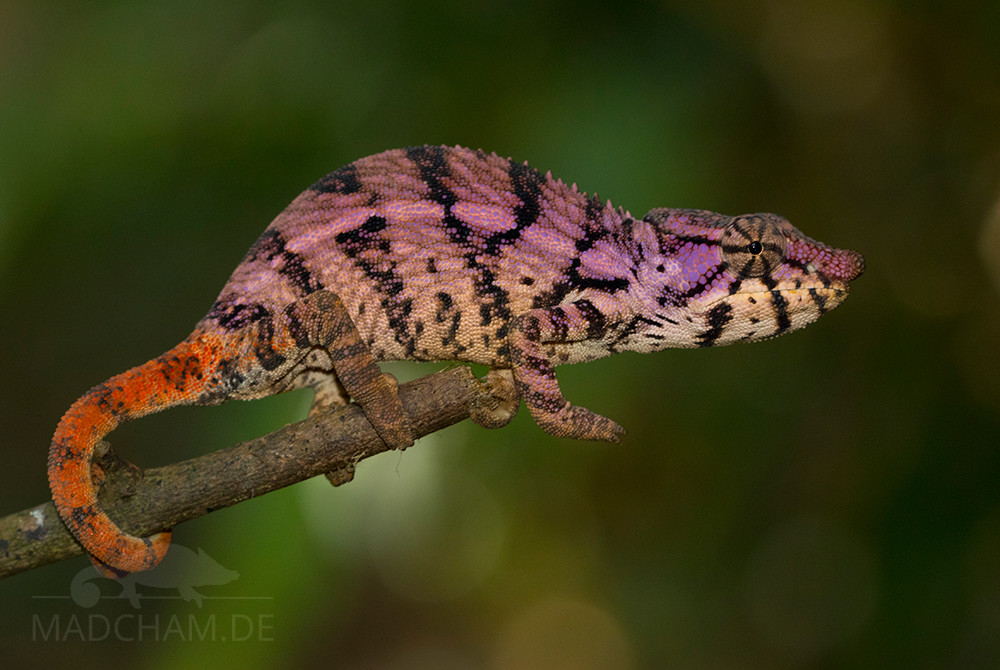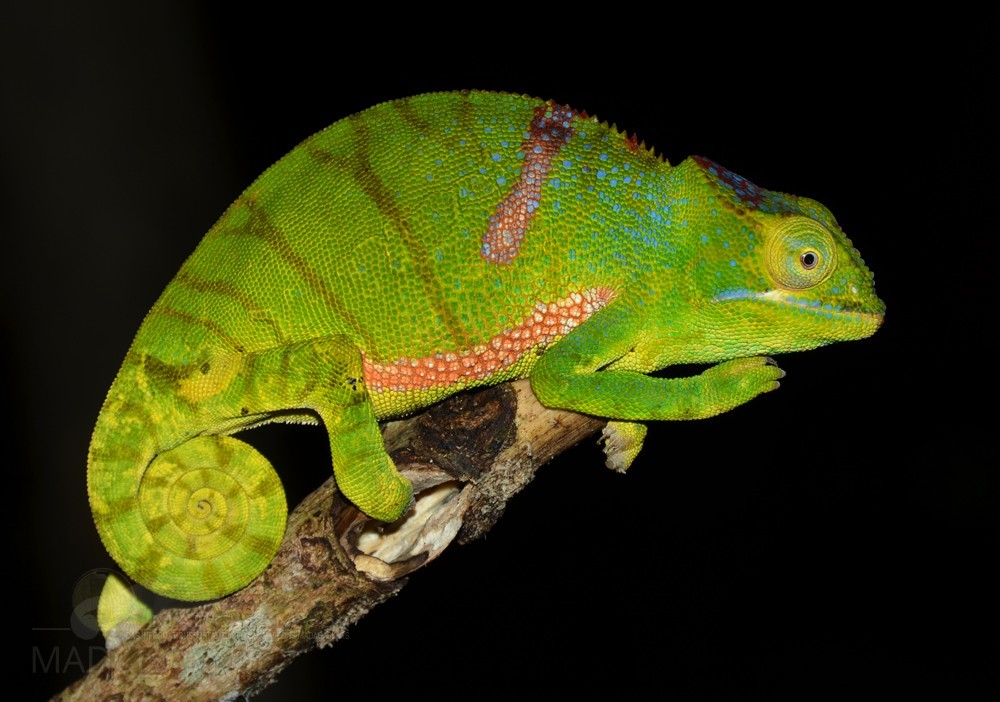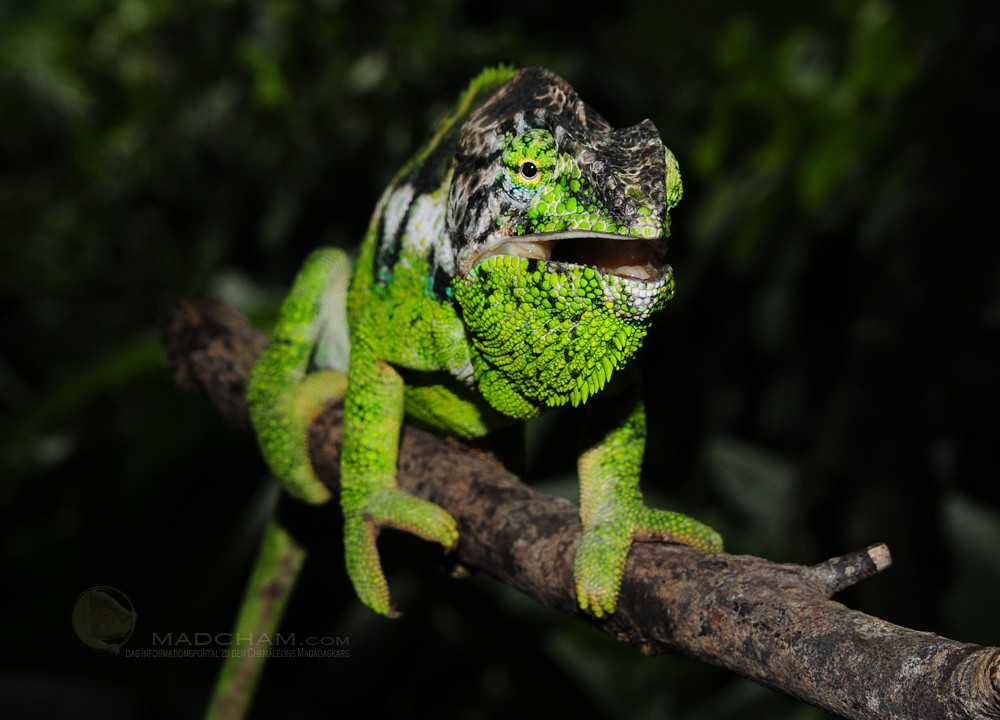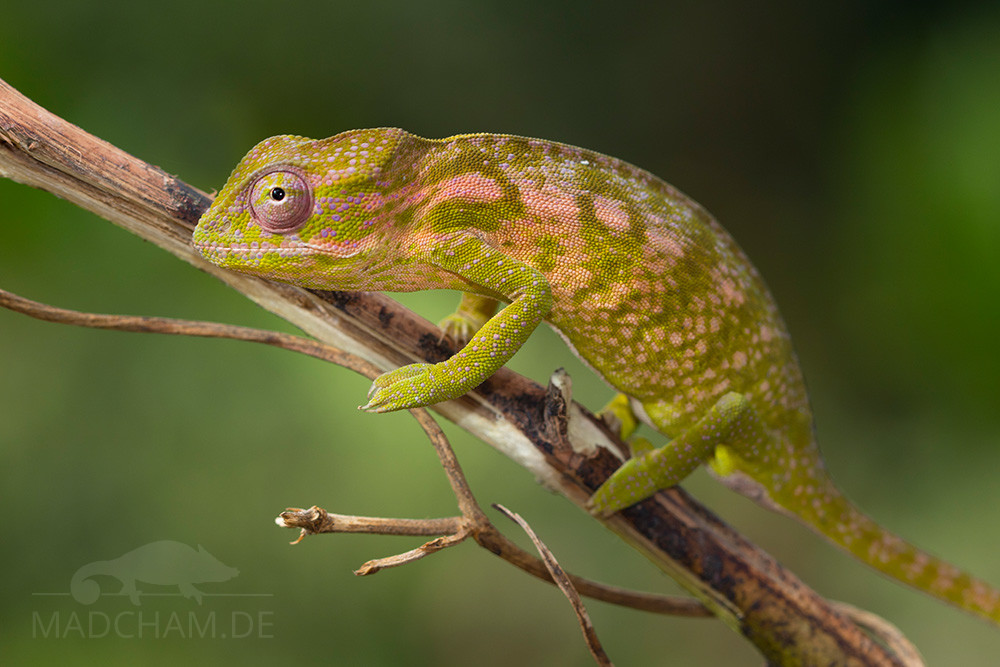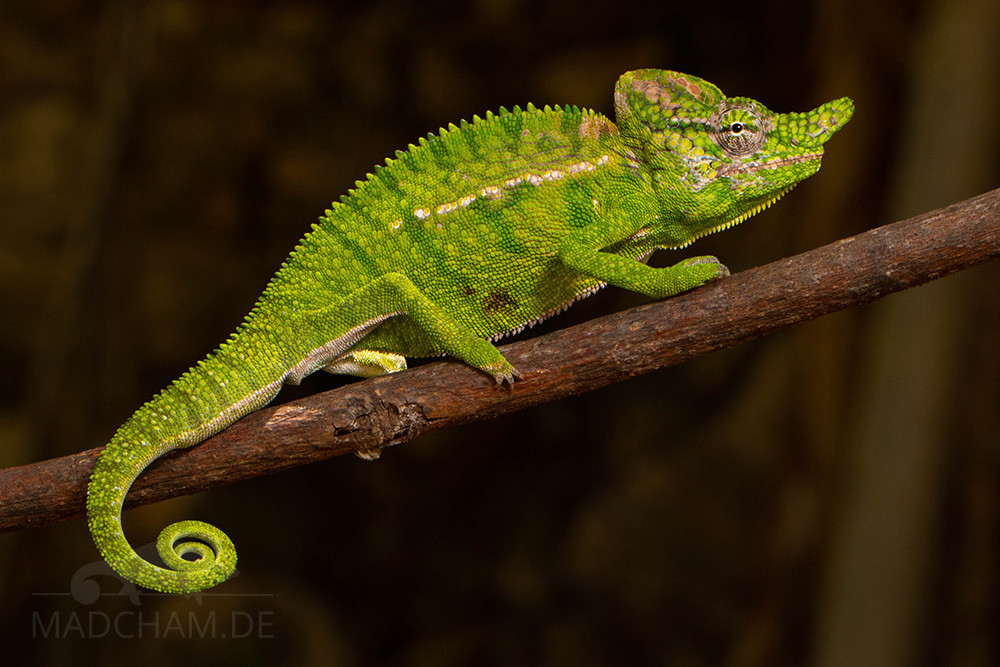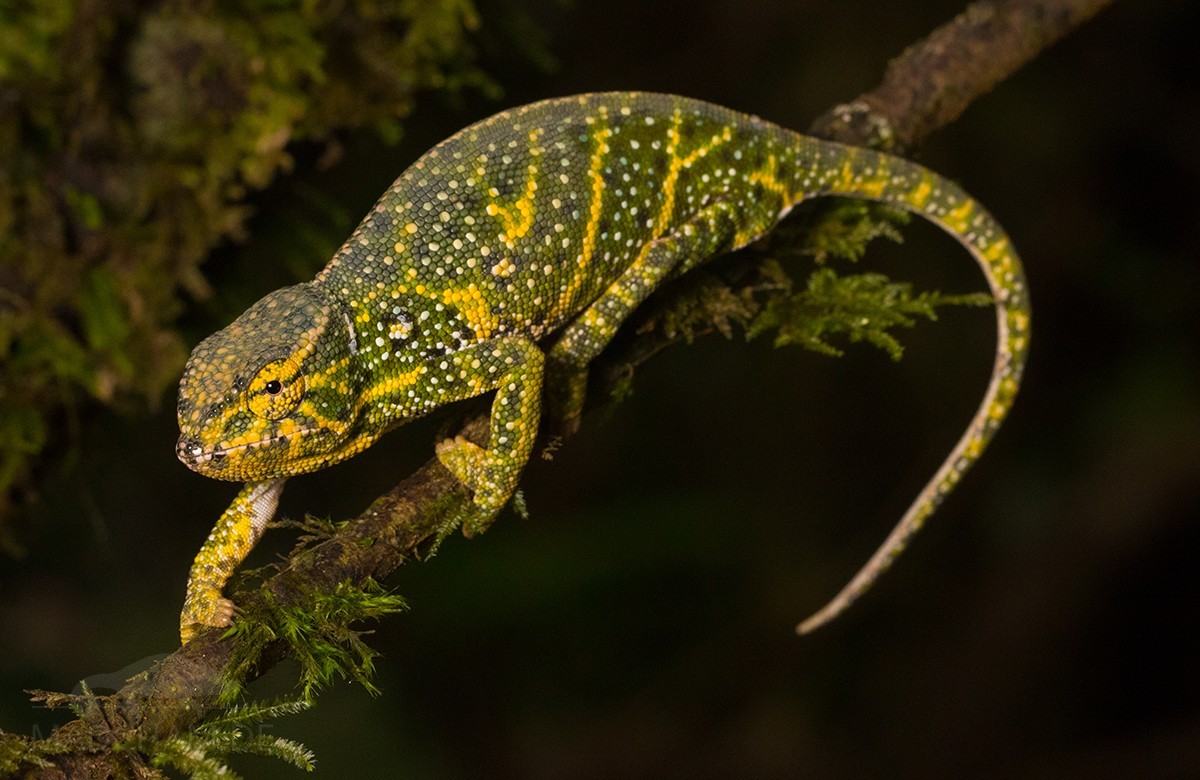Furcifer nicosiai
First description: Jesu, Mattioli & Schimmenti, 1999 Origin of the species name: The three Italian biologists Riccardo Jesu, Fabio Mattioli, and Giovanni Schimmenti from the Aquarium Genoa (Italy) dedicated the species to Guido Nicosia,...
Furcifer oustaleti
First description: (Mocquard, 1894) Origin of the species name: The zoologist François Mocquard of the Natural History Museum in Paris (France) received chameleons in the 1890s from M. Catat, the entomologist Charles Alluaud and...
Furcifer pardalis
First description: (Cuvier, 1829) Origin of the species name: The French zoologist and paleontologist Georges Léopold Chrétien Frédéric Dagobert Baron Cuvier founded the largest anatomical collection in Europe at the University of Paris (France)....
Furcifer petteri
First description: (Brygoo & Domergue, 1966) Origin of the species name: In 1966 the zoologists Édouard-Raoul Brygoo and Charles Antoine Domergue from the Natural History Museum in Paris (France) received several reptiles. They had...
Furcifer rhinoceratus
First description: (Gray, 1845) Origin of the species name: The English zoologist John Edward Gray described the species very briefly and named it after the Latin rhinoceros. By this, he meant the different pronounced...
Furcifer timoni
First description: Glaw, Köhler & Vences 2009 Origin of the species name: The German herpetologist Frank Glaw dedicated this species to his son Timon. Frank Glaw works in the State Zoological Collection in Munich...
Furcifer verrucosus
First description: (Cuvier, 1829) Origin of the species name: The French zoologist and palaeontologist Georges Léopold Chrétien Frédéric Dagobert Baron Cuvier founded the largest anatomical collection in Europe at the University of Paris (France)....
Furcifer viridis
First description: Florio, Ingram, Rakotondravony, Louis & Raxworthy, 2012 Origin of the species name: The biologists Antonia M. Florio, Colleen M. Ingram from the Natural History Museum in New York (USA), Hery A. Rakotondravony...
Furcifer voeltzkowi
First description: Boettger, 1893 Origin of the species name: The paleontologist Oskar Böttger, then curator of the Senckenberg Museum in Frankfurt am Main, dedicated this chameleon species to the German zoologist Alfred Voeltzkow....
Furcifer willsii
First description: (Günther, 1890) Origin of the species name: The German zoologist Albert Carl Ludwig Gotthilf Günther, then Director of the Zoological Department of the Natural History Museum of London (Great Britain), named this...

